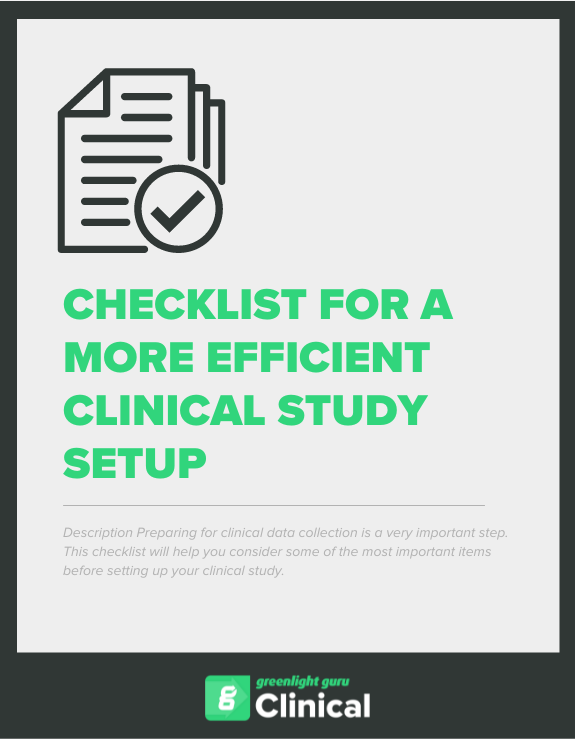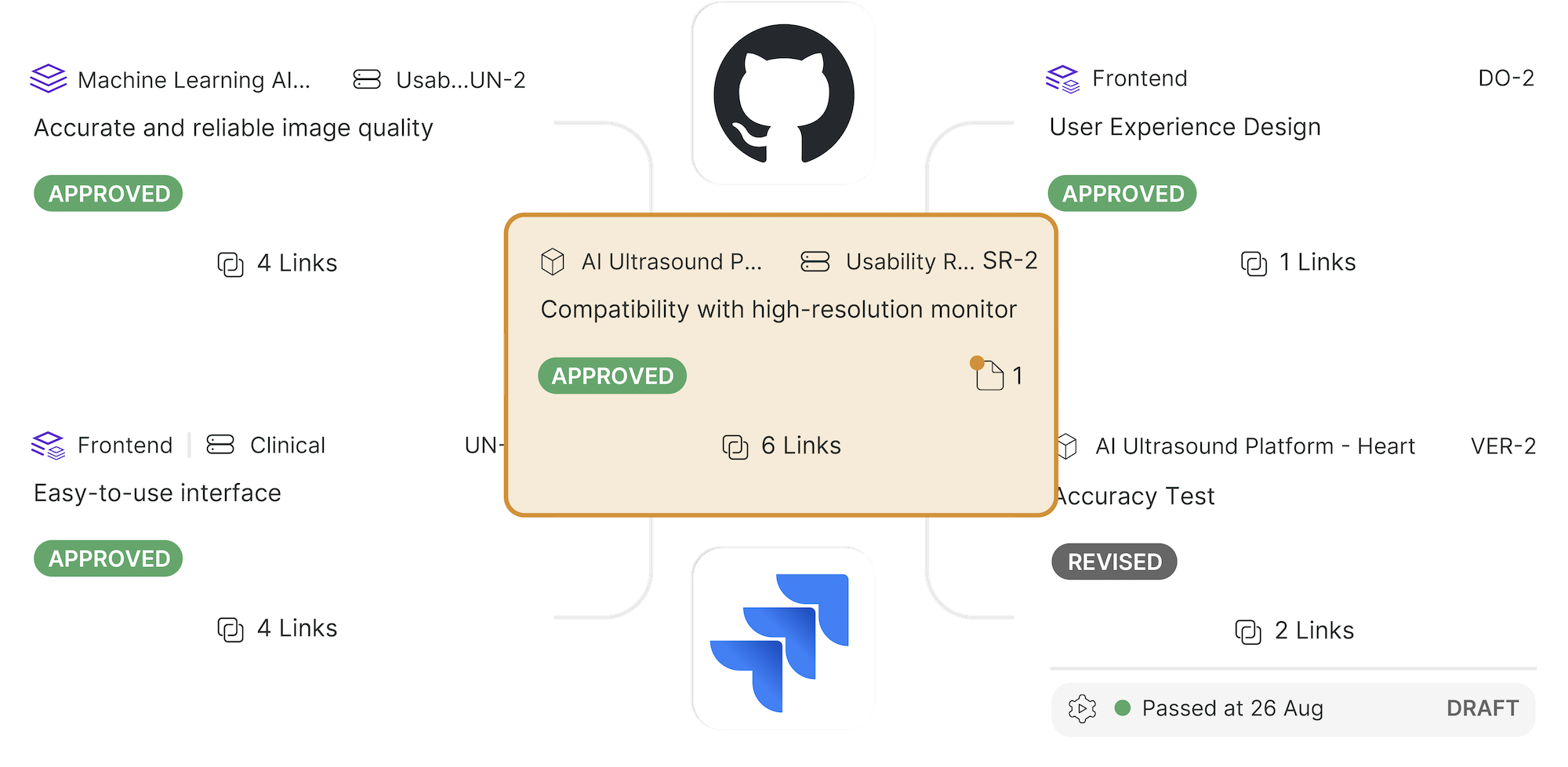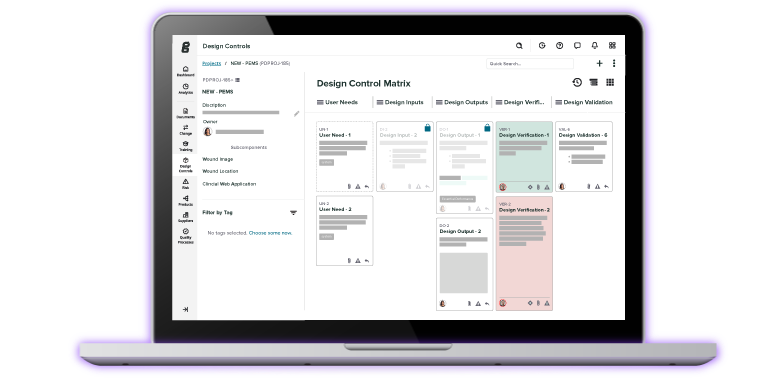Improving Clinical Data Collection with Effective eCRF Completion Guidelines

In clinical trials, study personnel use case report forms (CRFs) to standardize the collection of clinical data from study participants. This makes the CRF one of the most important documents in a clinical trial, as the design and content of a CRF can affect the quality and reliability of the data collected from participants.
While CRFs have been created as paper documents in the past, today, the accuracy and ease of electronic case report forms (eCRFs) mean they are often used instead of paper.
Using an eCRF, however, does not automatically mean that you will collect high-quality and reliable data. You still need to carefully consider how your eCRF form will be filled out. The eCRF completion guidelines you create for study personnel will go a long way toward determining whether the data you obtain can truly answer questions about the safety, effectiveness, or benefit of your medical device.
Here’s what you need to know about eCRF completion guidelines and their role in your next clinical study.
What are eCRF completion guidelines?
eCRF completion guidelines detail all the activities involved in completing, correcting, and signing an eCRF, as well as procedures for data handling. The goal of completion guidelines is to improve data accuracy, decrease data queries and corrections later on, and provide traceability for data collection.
The completion guidelines are meant to provide both context and explicit instructions for the study personnel filling out the eCRF. So the guidelines may cover things like procedures for observation and measurement, how to record data on the eCRF, how to choose data values, and important relationships between data elements. For instance, a guideline may state that a certain field should only be filled out if the answer to a previous question met certain criteria.
Given that all electronic data capture (EDC) systems differ at least slightly in their user interfaces and formatting, the eCRF completion guidelines should also provide any necessary instructions for navigating within the system in order to fill out the form.
The completion guidelines are essential documents and should be managed as such, meaning you should have SOPs for the creation, revision, approval, and distribution of these documents, and they should live within a quality management system (QMS) that provides for ongoing oversight and control of the guidelines.
Examples of eCRF completion guidelines
Clinical trials for different medical devices may have very different protocols, and all EDC systems have their own unique interfaces—which means there are no one-size-fits-all completion guidelines. Your own completion guidelines will depend heavily on your protocol and the EDC system you use. In fact, some EDC systems, like Greenlight Guru Clinical, will come with customizable templates for using the system to fill out an eCRF.
However, here are some generic examples that will give you a better idea of what eCRF completion guidelines tend to look like:
Demographic Information:
- Field: Date of Birth
Guideline: Enter in DD/MM/YYYY format. If the exact date is unknown, enter "01/01/2001" and specify the missing information in the comments section.
Medication Information:
- Field: Concomitant Medications
Guideline: Use trade name or generic name for medication names.
Adverse Events:
- Field: Adverse Event Description
Guideline: Select from the predefined list. Avoid free-text entries unless no suitable options exist. Use standard medical terminology.
Vital Signs:
- Field: Blood Pressure
Guideline: Enter systolic and diastolic values in mmHg format. Ensure values are within the protocol-defined range and verify accuracy before submission.
Laboratory Results:
- Field: Hemoglobin Level
Guideline: Enter the value in g/dL. If the result is not available, record as "Not Done" and explain in the comments section.
Study-Specific Data:
- Field: Visit Date
Guideline: Enter the date of the study visit in the specified format (MM/DD/YYYY). If the visit was delayed, provide an explanation in the deviation log.
One of the major benefits of using eCRFs instead of paper case report forms is that an eCRF can enforce data elements like date formats, prevent data entries outside a specified range, or alert users to blank entries that must be filled out. Overall, they reduce the burden on users by making it easier to comply with completion guidelines and increase the accuracy and reliability of data collection.
3 key attributes of effective eCRF completion guidelines
Good eCRF completion guidelines will lead to higher-quality data as they make it easier for study personnel to enter data correctly and reduce the chance of forgotten or mistaken entries.
Effective eCRF completion guidelines are:
1. Provided with necessary context and definitions
Completion guidelines must include detailed instructions when necessary—for instance, if the proper completion of a section of the form is not obvious based on context. Any necessary definitions or instructions should appear on the form next to the items they apply to. If the study protocol is amended in a way that affects the eCRF completion, then the guidelines should be updated to reflect the changes.
2. Written in clear and concise language
Good completion guidelines should be clear, provide all necessary instructions, and be easy for the investigator to complete. The form should not ask leading questions or suggest certain answers to the investigator completing the form. Any instructions or graphics that guide the flow of the form should be placed so that it is clear where to stop or where to skip to. The guidelines should avoid ambiguity and not assume knowledge of the EDC system or require outside guidance.
3. Given alongside proper training
All study personnel should be trained on eCRF completion, so that they understand the form’s completion guidelines before beginning the study. This training can be done on-site or remotely, and the sponsor should provide re-training if any study protocol amendments affect the completion of the eCRF.
It’s also important to give the eCRF completion guidelines to the data management team, biostatisticians, or other members of the clinical research team who would benefit from knowing how the study data is being collected.
Design and deploy the most effective and intuitive eCRFs with Greenlight Guru Clinical
At first glance, creating your eCRF completion guidelines may seem like a huge effort. But the reality is that with the right EDC system, it will be much simpler than it looks. When you choose Greenlight Guru Clinical, you’ll be able to set up advanced data validation rules and question visibility based on previous data inputs—which means fewer completion guidelines that need to be written out for users.
You’ll have 17 validated and ready-to-use question types you can use to standardize data collection and avoid time-consuming validation of question design on your eCRFs. You’ll also be able to clone, reuse, and improve existing forms for new studies, streamlining study design and minimizing some of the most time-consuming elements of a study build.
And you’ll be able to do it all safe in the knowledge that your EDC system comes with built-in GCP-compliant data monitoring and validation. So if you’re ready to see how our software can make your next study build a breeze, get your free trial of Greenlight Guru Clinical today→
Chris is a biomedical engineer and has been in the medical device space for about 13 years. He spent a number of years managing clinical studies for Class III devices in Pivotal studies, PMA studies, and post-market registries. He is currently working as a Solutions Engineer at Greenlight Guru where he showcases the...
Related Posts
The Essential Guide to eCRF (Electronic Case Report Form) for Medical Devices
Research shows eCRFs faster, more reliable than paper CRFs
Ultimate Guide to Clinical Data Management in MedTech
Get your free resource
Checklist for Clinical Data Collection and Efficient Study Setup











